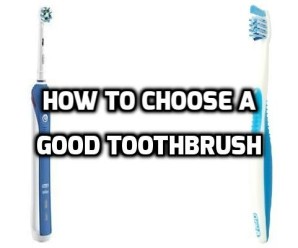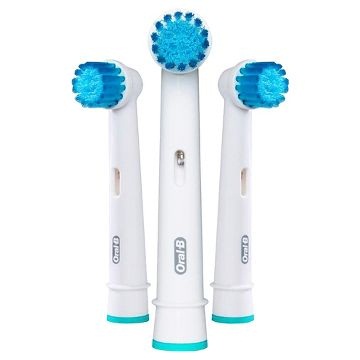
Choosing a good Toothbrush: Manual vs Electric
According to the American Dental Association, choosing a good toothbrush is not that difficult. Choose whichever suits you well, manual or electric. Both can serve the purpose if used properly. The best toothbrush would be one with soft bristles, easy to use and that fits your mouth well to reach all teeth areas easily.
Tooth brushing is certainly the most important part of oral health, followed by flossing and mouthwash. Regular brushing helps remove plaque and debris (remaining food particles) to keep your teeth and gum healthy. Plaque is a sticky bio-film on teeth where bacteria reside. If it is not removed every day, it can harden into tartar (calculus). Tartar can irritate the gum line to cause inflammation, swelling and even bleeding. Hence, brush your teeth everyday twice a day for two minutes each followed by flossing and tongue cleaning.
Generally, people swish the toothbrush quickly around the teeth without giving proper attention to difficult-to-reach areas such as the backside of the teeth. It results in bacteria build up to cause various dental problems.
The right practice is- place the toothbrush bristles at 45 degree angle against the gum line and gently move it back and forth. Avoid applying excessive pressure as it can damage the gum line. Focus on one to two teeth at a time and clean them thoroughly without any hurry. Do brushing and flossing in front of the mirror to ensure that no area of the mouth left uncleaned.
Always go for a toothbrush of a reputed brand because you love your teeth and you can’t put them at risk just to save a few bucks.
Choosing a good toothbrush
In early times, people used to chew a neem or cinnamon stick- they would rub the stick against the teeth and suck on that. Sucking would stimulate saliva production and at the same time, it would release essential oils with potent antimicrobial properties to kill the oral bacteria.
Read more: Cinnamon for Bad breath
Read more: Lemon candies for Bad breath
The nylon bristled toothbrush that we use today came into existence only after 1938.
These days, toothbrushes are available in different shapes, sizes, designs and with different modes of operation- manual and electric. Hence, it becomes a bit difficult to get the best one for you.
The basic qualities of a good toothbrush (manual or electric) would be:
- Soft bristles– Dentists across the world agree that a soft bristles toothbrush is the ideal one for optimum elimination of plaque and debris from your teeth and around the gums. On the other hand, regular use of hard bristles can damage the gum line to make your teeth sensitive.
- Small head– Small headed toothbrushes can clean those hard to reach areas of your mouth more effectively than the larger ones. In general, toothbrush head dimensions are- 1″ long and 1/2″ wide.
- Non slippery grip– The toothbrush handle should be non slippery and easy to grip.
The manual toothbrushes have evolved with below value added variations:
- Bristles design- flat, criss-cross or trimmed to a dome shape
- Brush head- rectangular or tapered
- Neck flexibility
Brush head refers to the topmost part of the toothbrush which contains bristles.
Bristles Design- Flat or Criss-Cross- Which is better
A case study reported in the European Journal of Dentistry, Jul-Sep 2014 concluded that bristles design – flat or criss-cross- doesn’t have much impact on plaque removal capacity. A soft bristled toothbrush with either of the bristles design would remove plaques quite equally.
Electric toothbrush
Powdered (electric) toothbrushes have recently become a popular alternative to the conventional manual toothbrushes because it makes brushing easier. People with brushing difficulties largely prefer the electric toothbrushes. For example, people with arthritis find it very hard to grip the manual toothbrushes due to their small handle. The electric toothbrushes with wider base are the best suited to them.
Also, some people believe that electric toothbrushes can do the cleaning job better.
Electric toothbrushes are fun for kids and even some adults.
Kids just love the toothbrushes with fun colors and graphics.
Various Features of Electric Toothbrushes
A basic model would come with a single brush head and one cleaning program. Advanced versions offer multiple features as below:
- Charging facility– The basic models use separate AA batteries for charging. But, the advanced ones have built-in rechargeable bases. The rechargeable toothbrushes are portable in size because they don’t need to have too wider bases to accommodate the AA batteries.
- In-built timer– Most of the electric toothbrushes have the in-built 2 minute timer. Either it would stop after the stipulated time or give some alarm. Going further, some advanced models have 30 second alarm time so that you devote equal time to all the four quadrants of your mouth.
- Different cleaning programs– The basic electric toothbrush comes with only one setting, but, the advanced ones come with different modes such as – daily cleaning, sensitive teeth, gum care, whitening, pro-cleaning and tongue cleaning.
- Pressure sensors– Pressure sensors would ensure that you don’t apply too much pressure while brushing. The moment you go too harsh, the sensor would come into action (either a light or a beep sound) to alert you.
- Soft grip handles– The soft grip handles would lessen the feeling of vibrations in your hand while brushing. Also, it would ensure a firm grip.
- UV sanitizer– The recent, most advanced toothbrushes have UV sanitizing facility to neutralize the left over bacteria off the bristles after use.
Which one is better- Manual toothbrush or Electric?
From the user’s point of view, it is quite obvious to expect that an electric toothbrush should clean the teeth quickly and more efficiently. But, it is not true actually. Various case studies have found that both types of toothbrushes can do their job equally well, if used properly.
The only electric toothbrush which certainly performs better than manual is the one with rotating-oscillating type cleaning mechanism, as found in various studies.
A rotation-oscillating type electric toothbrush has a small circular head which rotates in one direction and then the other. Such a toothbrush is designed to work on one tooth at a time for better cleaning.
- A case study published in the Journal of Dentistry, Mar 2004 concluded that both types of toothbrushes- manual and electric- have quite similar effectiveness in terms of plaque removal when used in the short term (one to three months) and long term (more than three months). Though electric toothbrush with rotation-oscillation technique performed better than the rest.
- A systematic review examining the efficacy of different types of electric toothbrushes against manual toothbrush is reported in the Journal of Dental Hygiene, 2004. It concluded that only rotating-oscillating electric toothbrush demonstrated better performance than a manual toothbrush.
- Another study reported in the journal- Cochrane Database System Review, Apr 2005 concluded that electric toothbrush with rotation oscillation technique are better in reducing dental plaque and gingivitis than manual toothbrushes.
The bottom line- Manual vs Electric
Due to the automatic cleaning mechanism and value added features, electric toothbrushes make brushing easier and more effective than manual ones. But, manual toothbrushes are also no less capable in thorough oral cleaning if used properly. If you are a health enthusiast and love to explore new things, then you can try a good quality electric toothbrush by spending a few more bucks otherwise a soft bristled manual toothbrush can do the job as well.
When to replace your toothbrush
A worn out toothbrush would lead to inefficient oral cleaning and can even damage the gum tissues.
You should replace the toothbrush every three months or when it started to wear out, whichever comes first.
The symptoms of a worn out toothbrush are-
- Discoloration of the bristles
- Bristles fuzziness
- Missed bristles (empty spaces)
Change your brush after cold, cough symptoms because the disease causing microbes can collect on bristles to cause re-infection.
Generally, children’s toothbrushes need to be replaced more often than adults because they tend to be more harsh on the bristles.
Most of the electric toothbrushes have separate brush head and handle. Hence, just replace the brush head after 3 months.
Toothbrush cleaning and storage tips
- After brushing, thoroughly rinse your toothbrush to remove any remaining debris or toothpaste.
- Store it in an upright position and let the bristles air-dry.
- If all the toothbrushes of your family are stored in the same holder, make sure the bristles don’t touch each other.
- If you are travelling, it is advisable to cover the toothbrush head to avoid any contamination. But, don’t cover it immediately after brushing as the moist environment would promote growth of bacteria. Let the bristles dry first, only then cover it.
- Don’t share toothbrushes. It is not a hygienic practice. Every family member should have a separate toothbrush.
- If you are dealing with dental problems and keen to have some additional precautions, you can soak the toothbrush in an antibacterial mouthwash after brushing to reduce the bacterial build up on the toothbrush.
- Also, you can use a FDA (Food and Drug Administration) approved toothbrush sanitizer for extra protection.
From where to buy
You can buy a toothbrush with soft bristles from a departmental store near to you. Otherwise, please check the below suggestions from Amazon. They have good user reviews and looks decent.
Manual Toothbrush
If you are from USA, click here to check
If you are from UK, click here to check
If you are from India, click here to check
Electric Toothbrush
If you are from USA, click here to check
If you are from UK, click here to check
If you are from India, click here to check
References
https://www.ncbi.nlm.nih.gov/pmc/articles/PMC4144140/
https://www.ncbi.nlm.nih.gov/pubmed/15001285
http://www.cda-adc.ca/en/oral_health/cfyt/dental_care/flossing_brushing.asp
http://www.ada.org/en/science-research/ada-seal-of-acceptance/product-category-information/toothbrushes
https://www.ncbi.nlm.nih.gov/pubmed/15190692
https://en.wikipedia.org/wiki/Toothbrush




